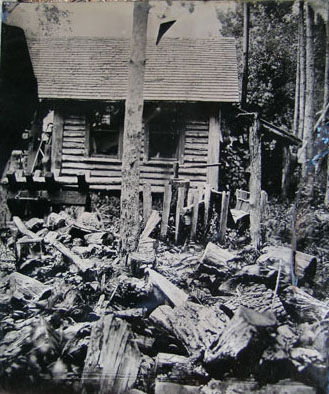Artwork Available for Purchase
Some of John's Rare Artwork is Now Available to the Public
Get your STEREO TINTYPES here!

No! these are not the world’s first ever made stereo tintypes. But, they are the world’s first in modern times, and they remain the only true Ferrotype Tintype Stereo Views ever made in modern times {except for a few that Camp Tintype students have made while at the workshops}. As totally obscure and rare as these one of a kind stereos are today, they likewise were in the 19th century. That is because they made no commercial sense to the professional photographer of the day who was primarily interested in making lots of money selling mass produced stereo albumen prints from glass negatives. Only a scant few, one of a kind, stereo tintype pairs were made, mostly on a lark. Today they are the rarest of all antique stereo photography. They are rarer than cased stereo Daguerreotypes or cased stereo Ambrotypes. Clearly the next best thing for the collector of the rare and stereo is a contemporary Stereo Tintype.
Think of it, you’d be beating out the likes of some of the most prestigious fine art and alt photography collecting museums in the world, ones such as the Met, the Getty, George Eastman House, and all the rest around the globe who do not have a fine art stereo tintype from the second wet-plate era. How often do you have bragging rights like that!?
I remind all, these are not prints but rather from life, one of a kind, real deal Ferrotype Stereo Tintypes. 3D was super fun for our great ancestors and it’s just as fun today and even more fun when you’re viewing a card mounted stereo pair in an antique or reproduction stereoscope viewer, and especially so when it’s a real deal ‘Coffer’ Stereo Ferrotype Tintype pair!!
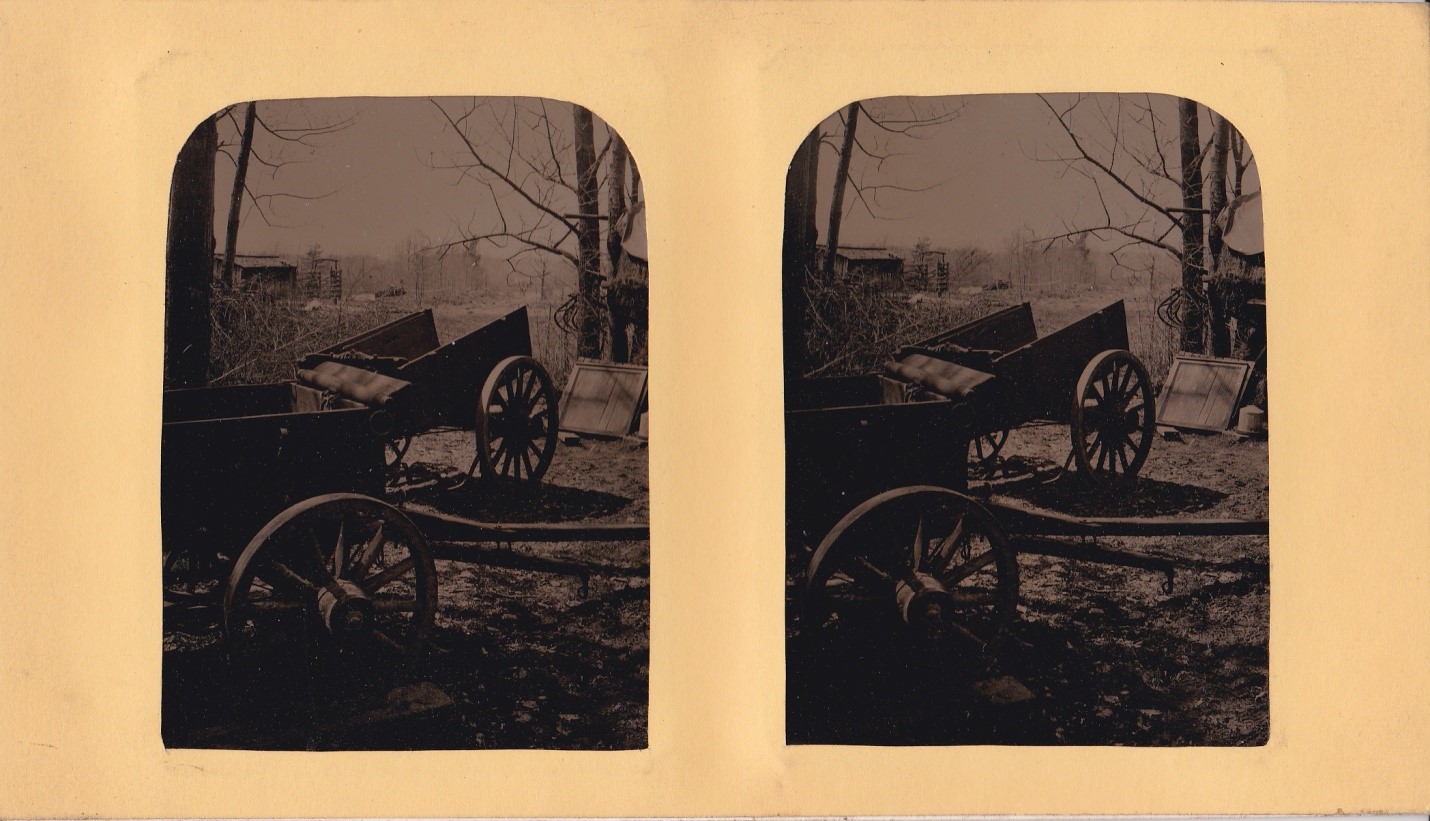
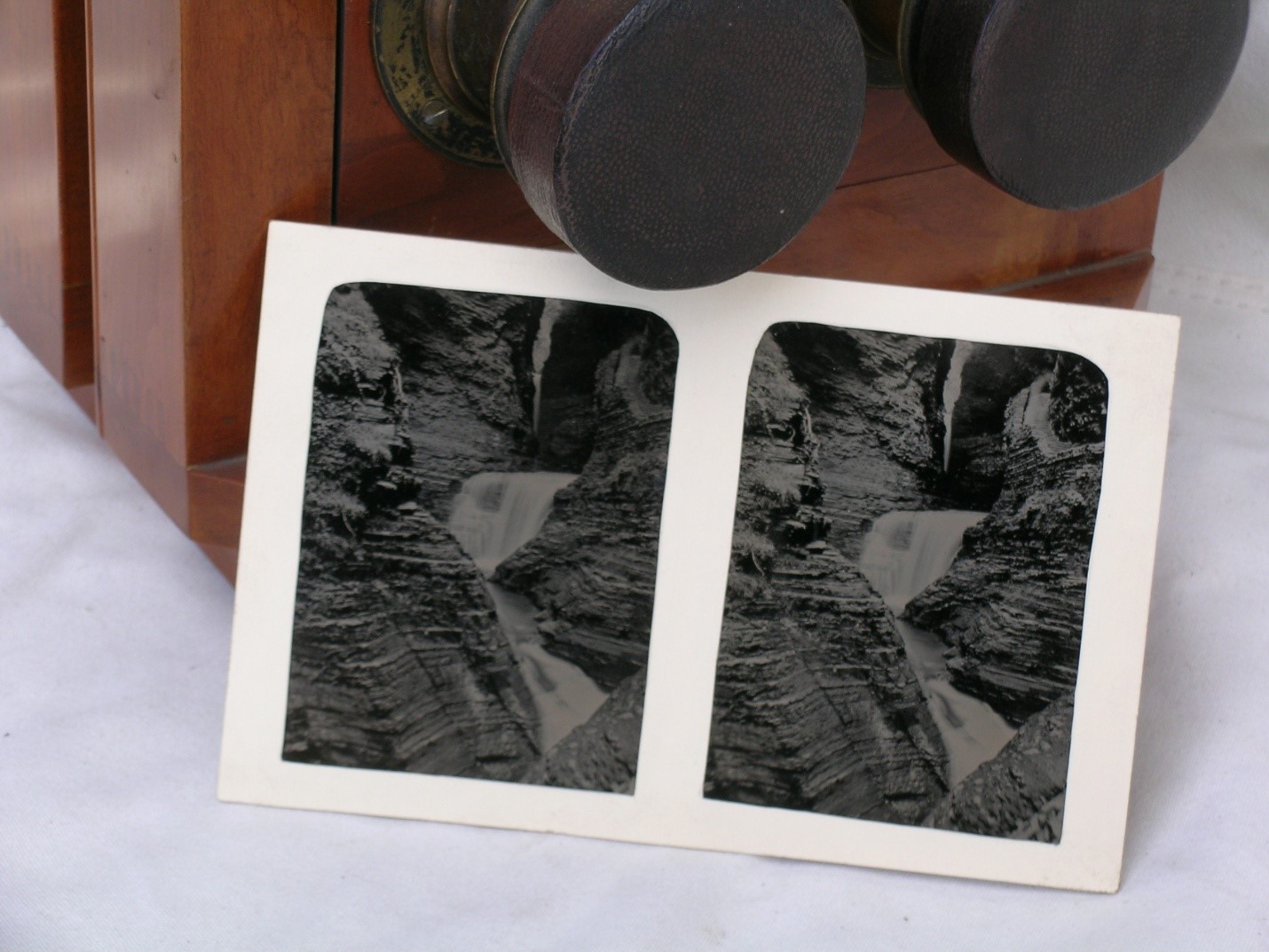
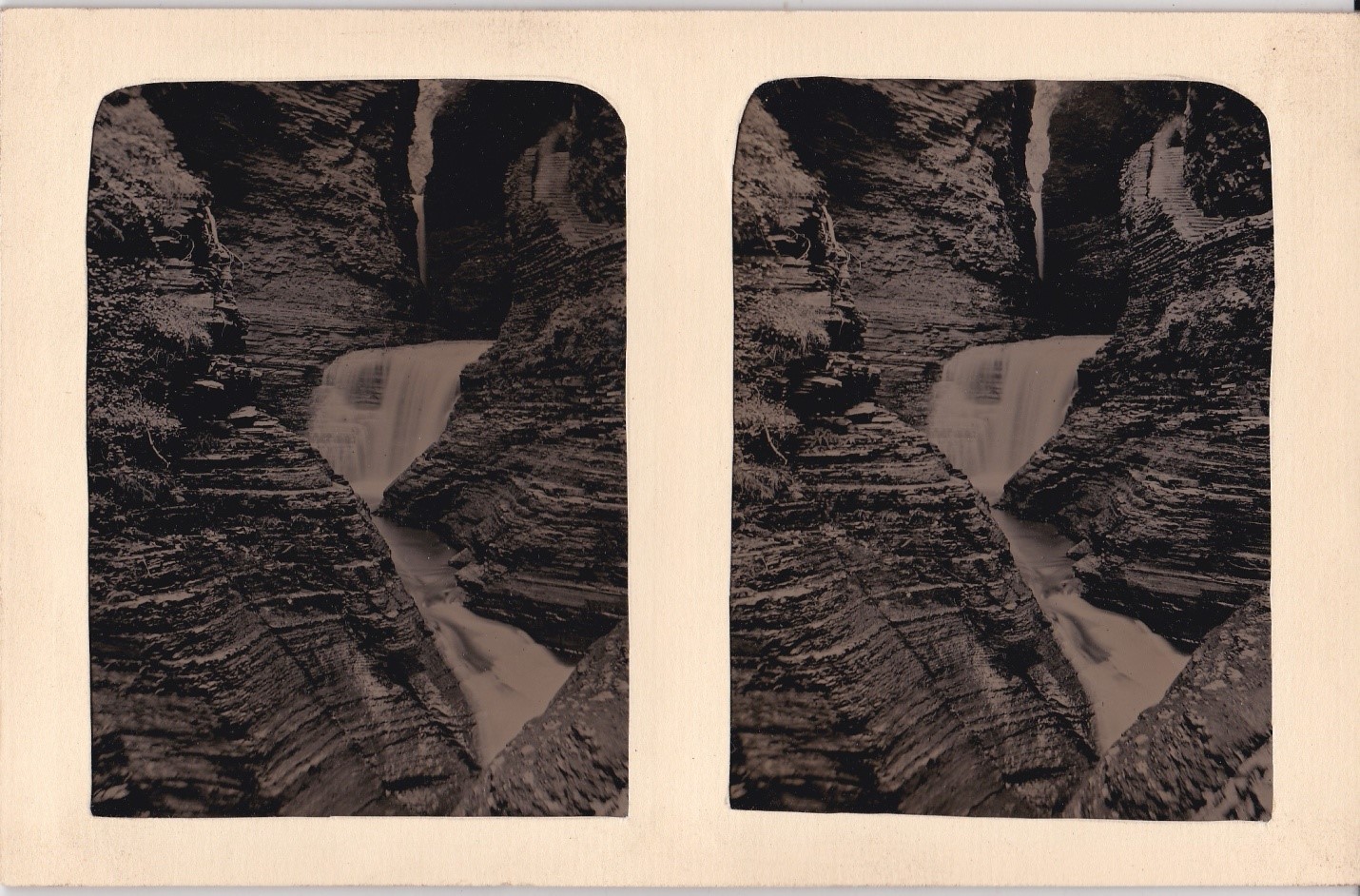


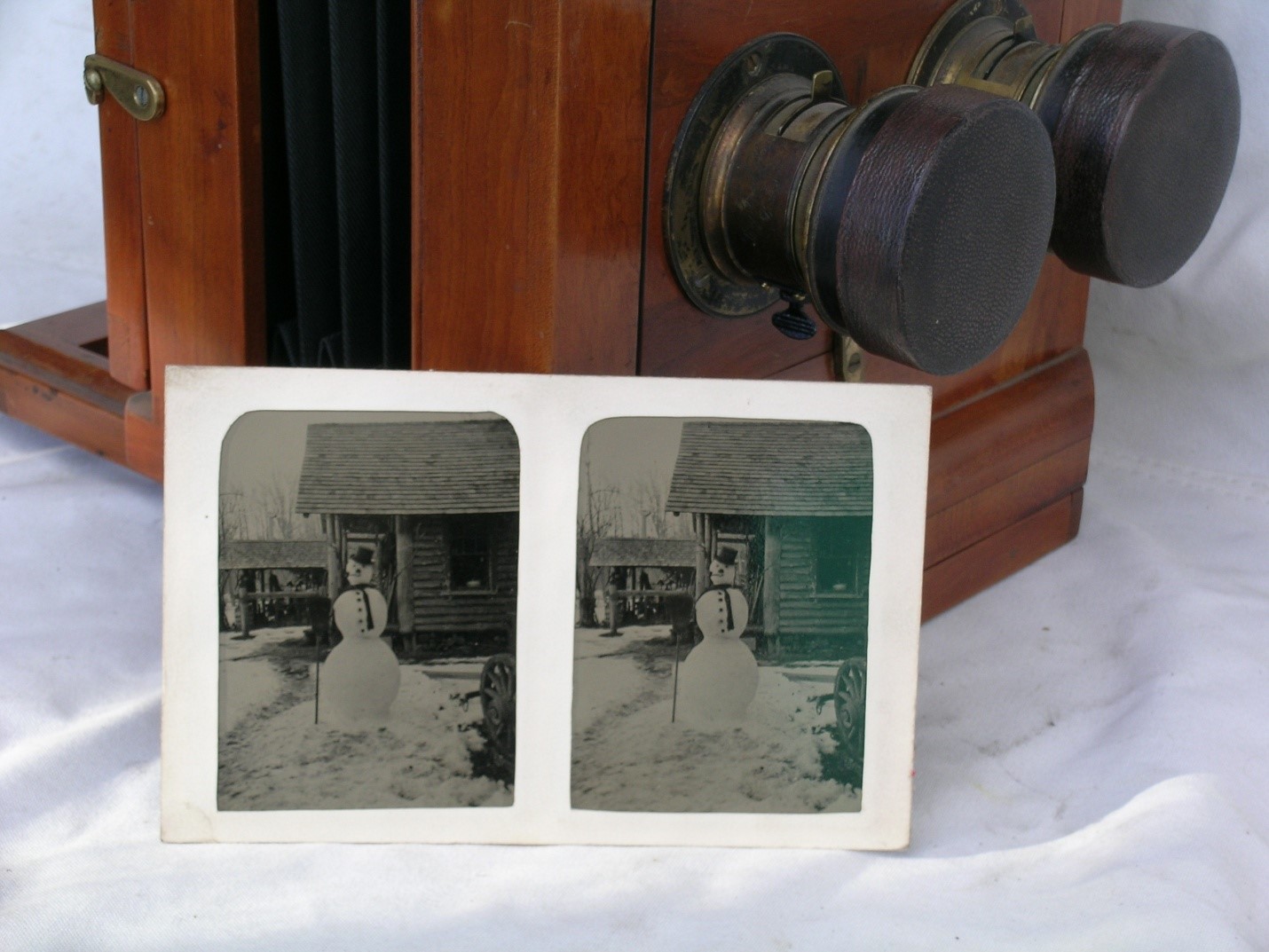
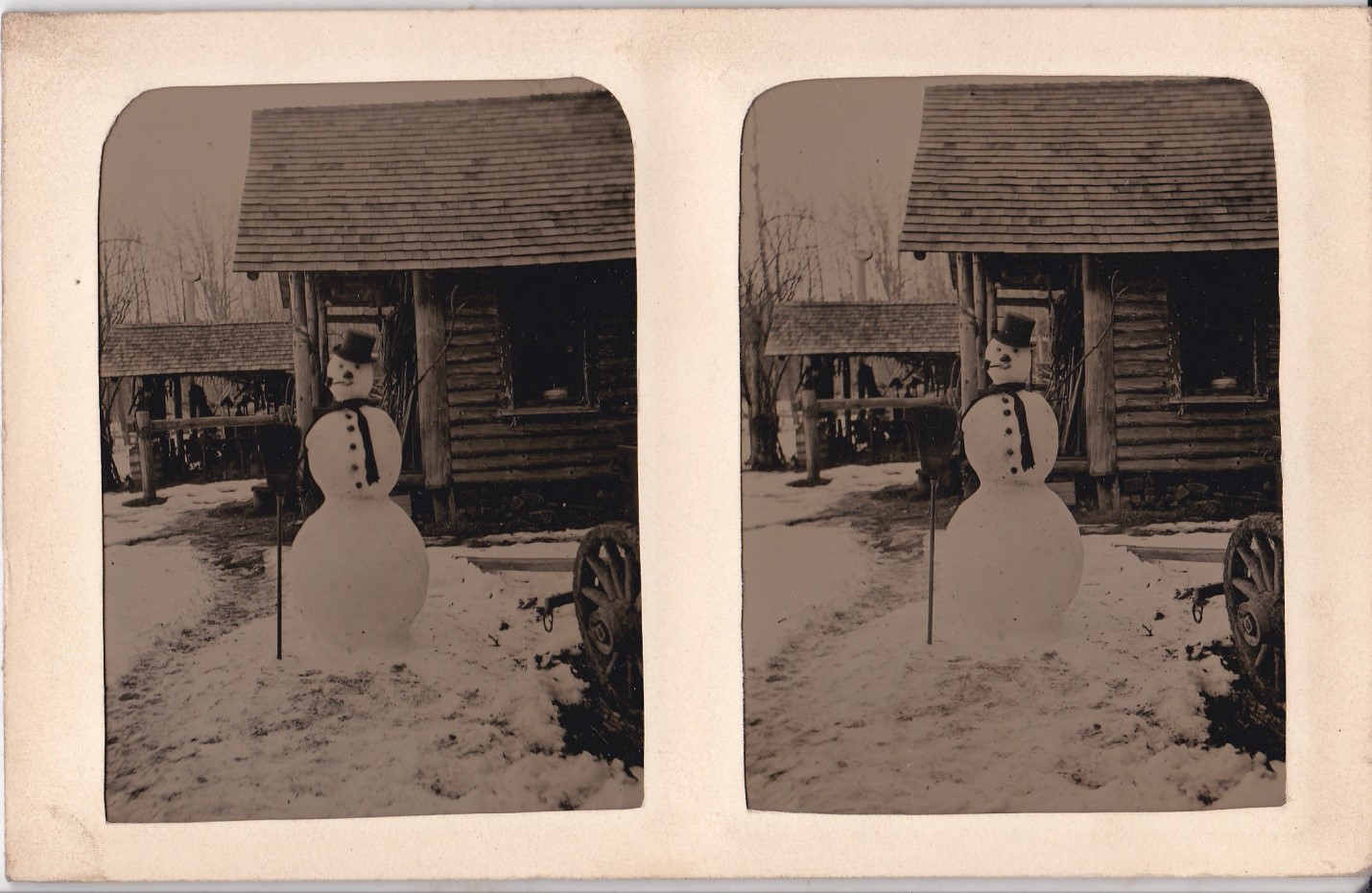
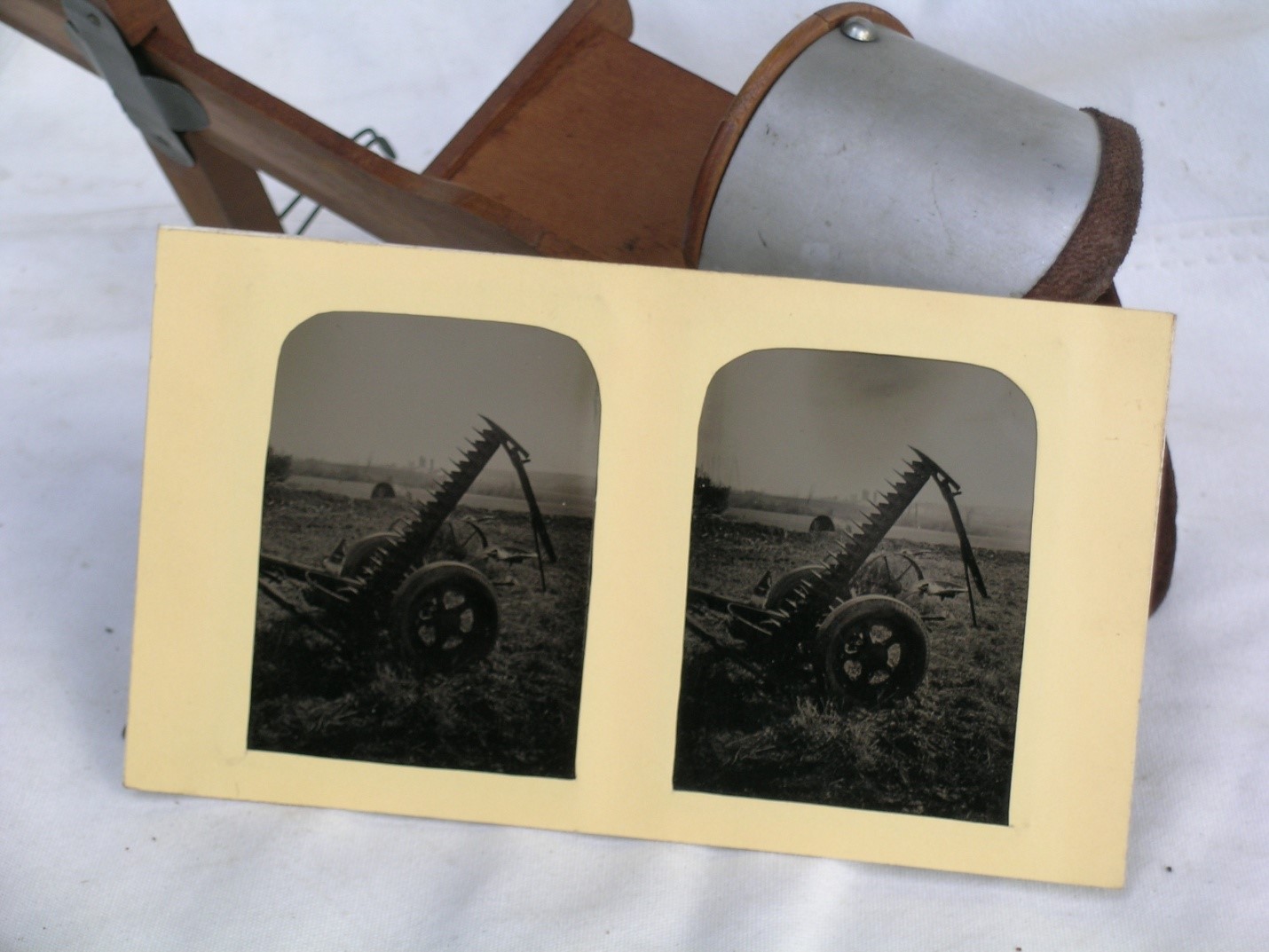
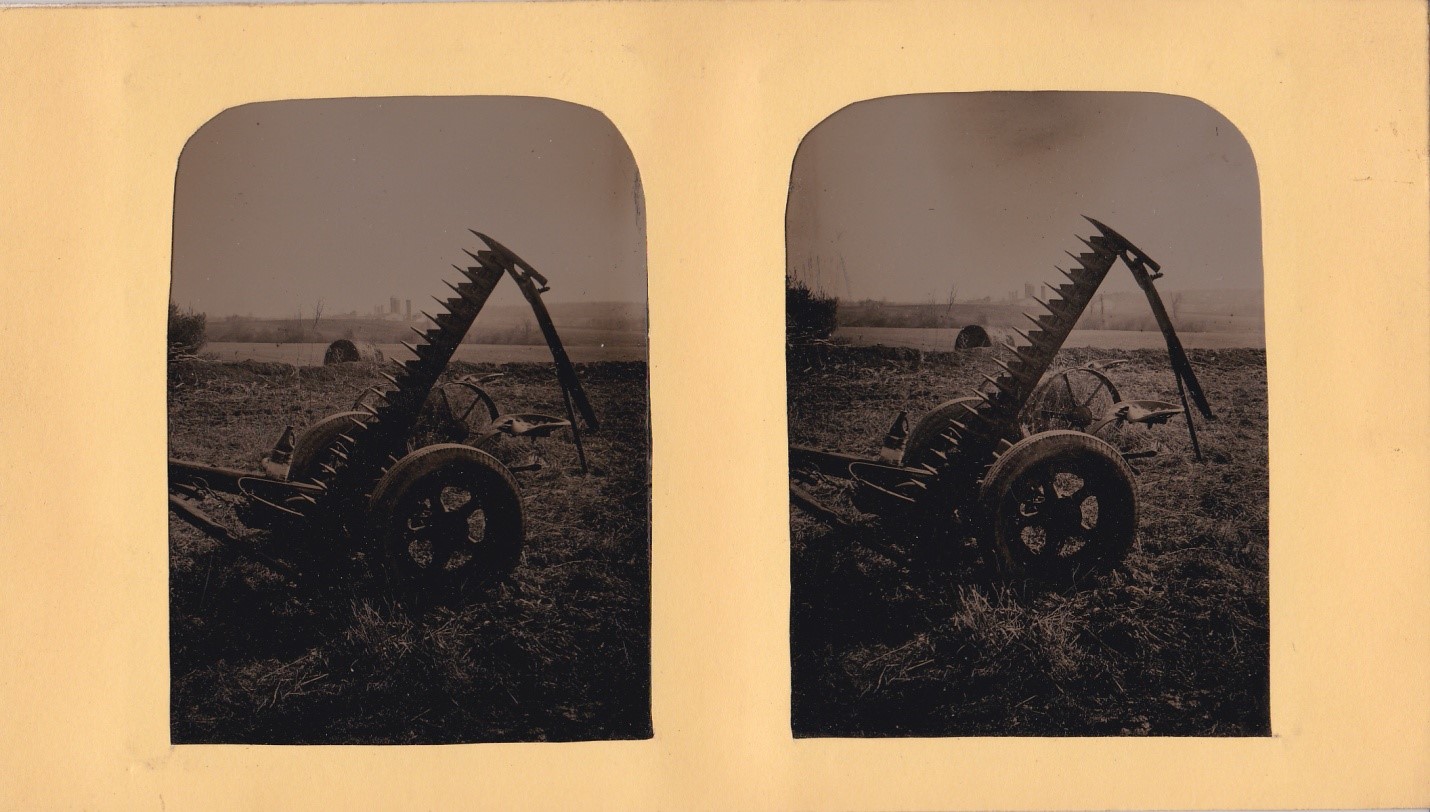

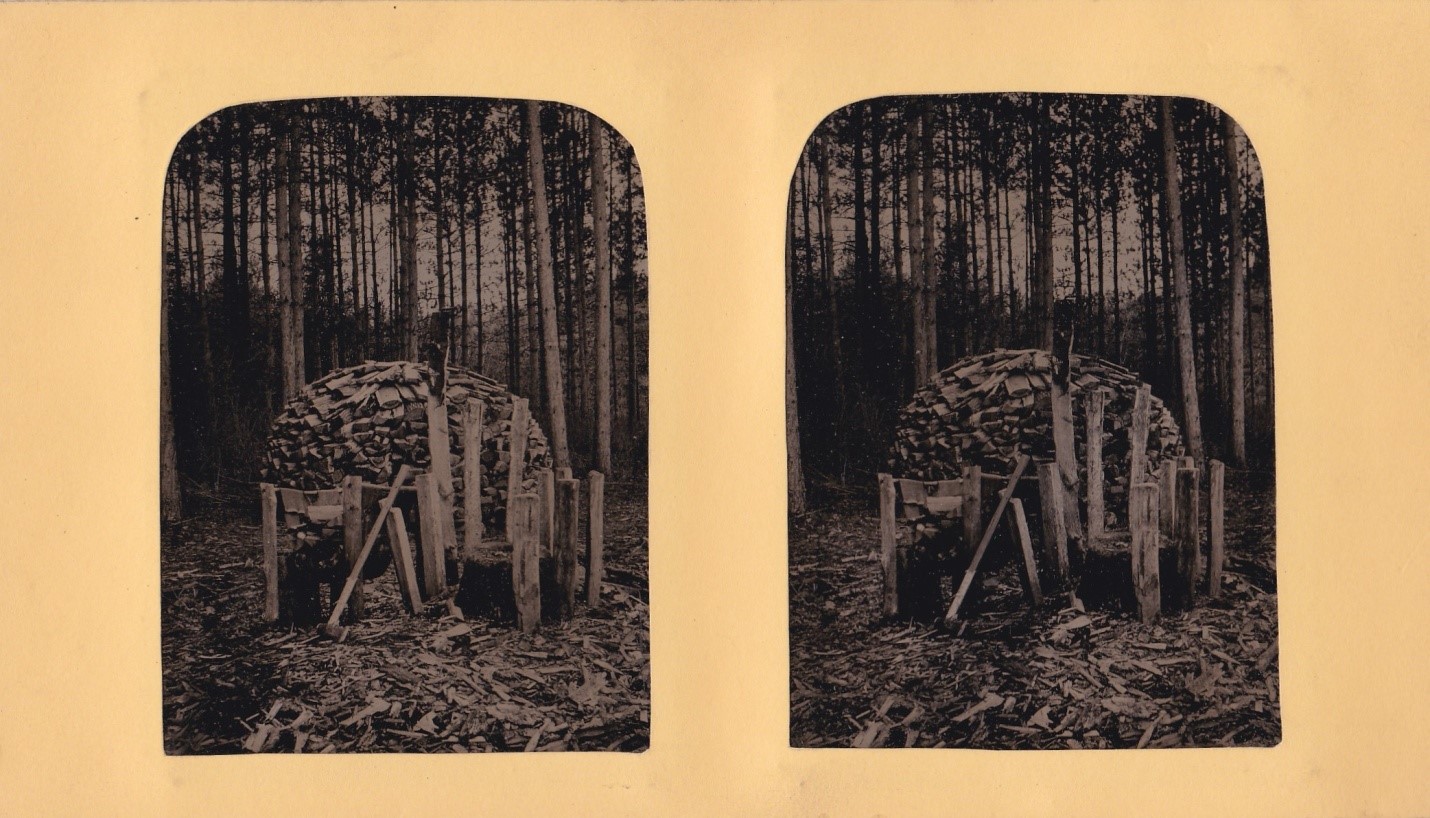
Return to Main PagePRICES:
Wagon and ox cart at Camp Tintype 2005..... $2500
Watkins Glenn Falls 2006................... $2000
Tree Phone (hand colored).................. $4000
Snowman in 3-D............................. $3500
J.D. mower, bail........................... $1500
At the winter well......................... $4000
Bee hive wood pile......................... $3000
TINTYPE MOVIE PLATE
When the world’s first Tintype Movies came to town: In 1860 the Simon Wing Multiplying camera was introduced to the world. It was a marvelous contraption capable of producing multiple rows of individually shot and cropped images on a single large plate. If the plate was a glass negative gang printing of the soon to be extremely popular Carte de Visite, card mounted albumen prints could easily be done. If it was a Ferrotype (Tintype) plate, it was cut up to produce a virtual hand full of small size portraits that were then mounted in CDV size mounts. This was a revolutionary event in the progression towards portraiture for the masses. It quickly put any lingering Daguerreotypist or Ambrotypist with their one at a time cased and much more expensive individual images out of business.
Fast forward 145 years to the revival of the wet-plate collodion process and the enthroning of Microsoft Windows. In 2005 John realized there could be a very interesting marriage between the two of them to create the world’s first Tintype Movie. First he needed to build a very big 11x14 format Simon Wing style multiplying camera, the first in modern times and probably the last, which he did that snowy cold winter. He outfitted it with an original 1860’s CDV format Petzval design lens. That Spring with the help of his very talented and computer savvy assistant, Tom DeLoosa, John took the 11x14 plate’s multiple images the camera produced and by computer magic put them in motion. Yes, just 15 images, less than a playing card size, carefully choreographed, shot in succession in less than ten minutes was all it took to make an amazingly smooth motion picture loop. Tom and John made a total of only four movies. “Scrub Board Washing”, starring Tom is the last that is still available. Clearly nothing done in the wet-plate world has ever come remotely close to this ingenious blending of old world and new world technology, coupled with guts and talent to make something so unique and extraordinary. To top it off, it’s a Ferrotype Tintype and not the far easier cheap beginner grade peal and pour aluminum tintype plate everyone is using now days. Also, like virtually no one else would have the gumption to do, it was shot using pure natural sunlight and not brainless point and pop strobes or UV artificial lights. No! Never that! This is the Real Deal, and it can be acquired for only $15,000.
.jpg)
Check the Videos Page to see the video made from this one-of-a-kind plate.
Return to Main PageTHE DAILIES
When Fox Talbot shot a calotype paper negative in and around his cottage in the Hampshires, one for each day for the year 1844, he called the series the “Daily Photograph”. Sadly, few took notice of it and eventually he used them for fire tinder out of shear melancholy. Likewise, Daguerre’s “Daily Daguerreotype” for the year 1850 met a similar fate. All 365 plates were eventually buffed out and recycled by a local portrait Daguerreotypist that bought them from a rubbish collector after Daguerre had apparently pitched them out in a fit of rage. Then, don’t forget Frederick Scott Archer’s wet-plate collodion glass negative a day for the year 1855 of his work-a-day-world. His critics called it a bad case of narcissism. He paid no attention to them but unfortunately after his premature death in 1857all 365 plates ended up stripped clean for use as green house window panes.
The above is fiction, but what if? What if they had made dailies for a year, and what if they had survived the passage of time? Clearly it would represent some of the most precious bodies of work in Photographic History. But wait, there’s still hope, a similar for real event took place for the year 2007, when wet-plate revival pioneer tintype artist John Coffer shot the “Daily Tintype” series. It was made on his upstate New York small farm. It is an intimate, beautiful and unique chronicle of the low tech log cabin, horse drawn lifestyle he lives. Working alone, this was truly a personal endeavor. The images take you only steps behind him as he pauses to shoot a tintype of his immediate surroundings and the things that mattered to him, or were just there that day. They take you through all the seasons in his world beyond just Winter, Spring, Summer, and Fall. The plates are small by modern standards, with nothing larger than 4 1/4x5 ½ and some as petite as 2x2 ½ inches, and all are real deal Ferrotype Tintypes. Many are of the “Hobo Tin” variety, cut from discarded tin cans, and some are on old canning jar lids. Together they represent a composite picture of monumental proportions that is bigger than any Tintype ever made before or since. It was an unprecedented and unique project and likely will always remain so.
John is offering this set of 365 Tintypes, put up by the week in 52 frames. The January 1, 2007 Tintype is a self portrait as he stands with his old trusty C.C. Harrison lens simple wooden box camera near by on the porch of his cabin. The plate is mounted in one of his handmade famous Super Fine reproduction 1860’s style cases. The price for this incredibly rare body of work, never to be sold piece meal, is $145,000.
Samples from "The Daily Tintype" series:
.jpg)
.jpg)
.jpg)
.jpg)
.jpg)
.jpg)
.jpg)
.jpg)
Own a Piece of Photographic History...
... as significant as any of the other firsts of the 19th century, such as Talbot’s famous first photographic image of the latticed window, Daguerre’s first street scene, the first aerial daguerreotypes from a hot air balloon by what’s his name, Muybridge’s first motion study plates, and... you get the idea. The one I’m about to mention waited until 2003. It is the world’s first Mammoth Plate Tintype. It measures in at the classic Mammoth Plate size of 20x24 inches. Many glass negatives that size were shot in the late 19th century, but not one Tintype. The largest Tintypes in that period were 11x14 (less than a third the size of a Mammoth). This is because the manufactured Ferrotype plates used by Tintypists of the day were no bigger than that. Tintypist in the old days never manufactured their own plates like John does. This plate actually had its asphaltum based black japan finish base coat baked on over a campfire. The plate is fifteen thousandths of an inch thick mild steel, making it a real deal Ferrotype Tintype. Of course, the wet-plate collodion process and a huge Mammoth Plate size camera were used to make the image. The plate was Hypo fixed and varnished using traditional gum sandarac varnish. Remember, this was John’s very first attempt at a plate this size and it is not just some sleezy easy factory manufactured aluminum peel and pour plate tintype that the wet-plate world is drowning itself in now. It was poured and processed in the very cramped for space famous Photographic Van wagon. The scene is simply what was close at hand, his woodpile with cabin in the background, much like Fox Talbot’s window or what was out Daguerre’s apartment window. John was assisted by his students at the time, Joni Sternbach and Eric Taubman.
Legendary, historic in proportion, art only increases in value. This piece is being offered for sale at $38,000.
